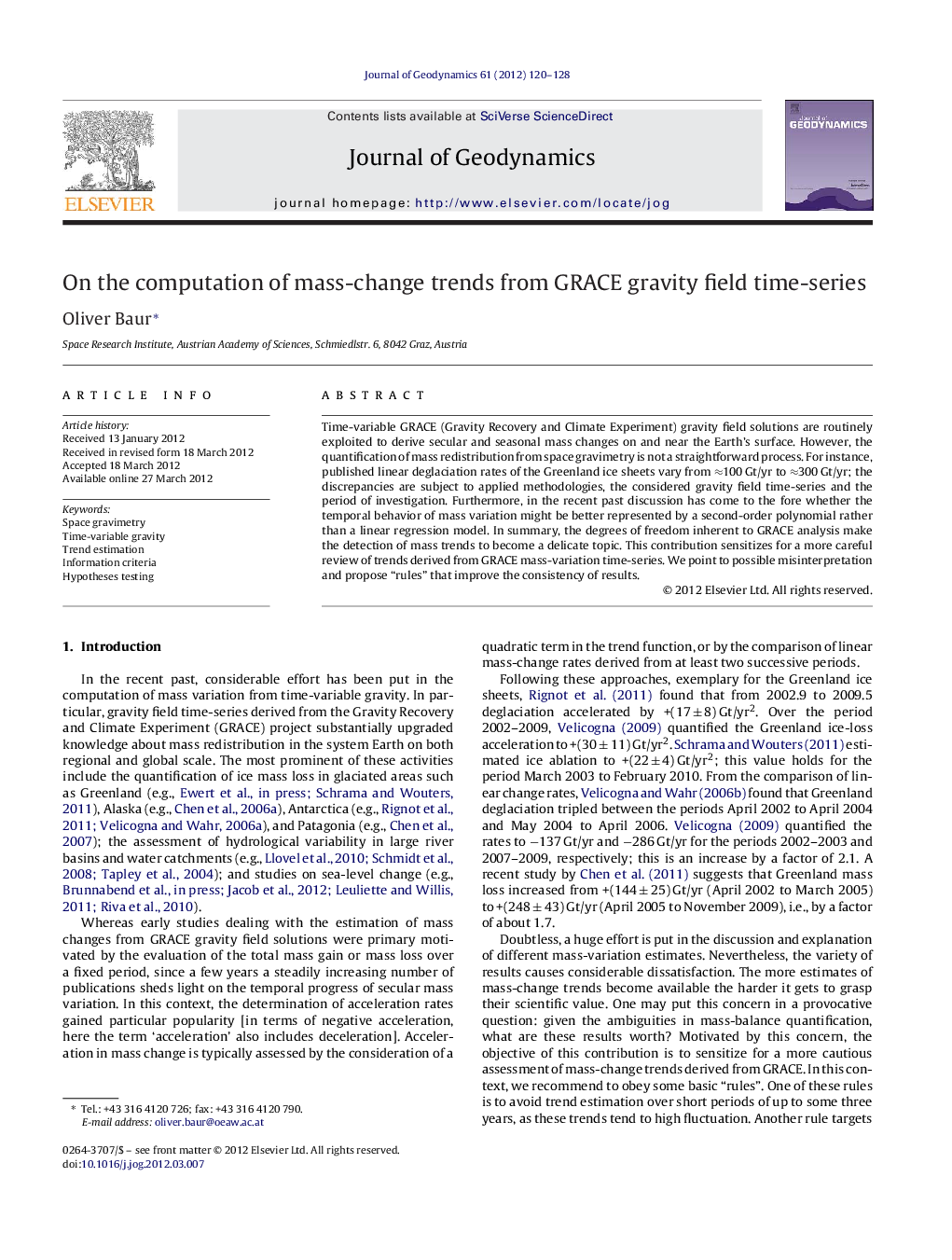| Article ID | Journal | Published Year | Pages | File Type |
|---|---|---|---|---|
| 4688275 | Journal of Geodynamics | 2012 | 9 Pages |
Time-variable GRACE (Gravity Recovery and Climate Experiment) gravity field solutions are routinely exploited to derive secular and seasonal mass changes on and near the Earth's surface. However, the quantification of mass redistribution from space gravimetry is not a straightforward process. For instance, published linear deglaciation rates of the Greenland ice sheets vary from ≈100 Gt/yr to ≈300 Gt/yr; the discrepancies are subject to applied methodologies, the considered gravity field time-series and the period of investigation. Furthermore, in the recent past discussion has come to the fore whether the temporal behavior of mass variation might be better represented by a second-order polynomial rather than a linear regression model. In summary, the degrees of freedom inherent to GRACE analysis make the detection of mass trends to become a delicate topic. This contribution sensitizes for a more careful review of trends derived from GRACE mass-variation time-series. We point to possible misinterpretation and propose “rules” that improve the consistency of results.
► Trend estimates based on short periods show high fluctuation. ► Comparison of trends derived from differing periods yields misinterpretation. ► Model selection criteria mitigate discrepancies in mass-change trends.
